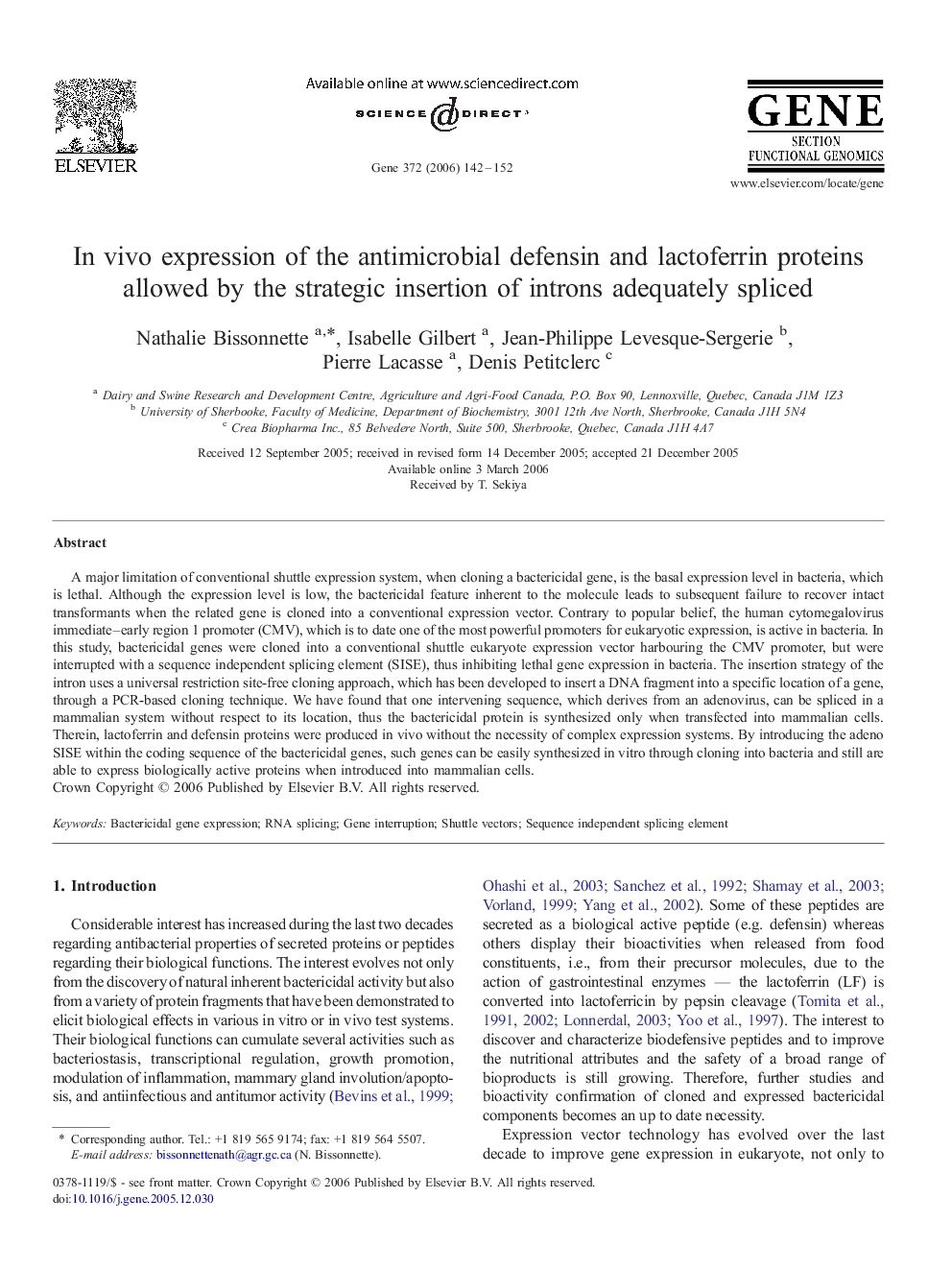| Article ID | Journal | Published Year | Pages | File Type |
|---|---|---|---|---|
| 2820183 | Gene | 2006 | 11 Pages |
A major limitation of conventional shuttle expression system, when cloning a bactericidal gene, is the basal expression level in bacteria, which is lethal. Although the expression level is low, the bactericidal feature inherent to the molecule leads to subsequent failure to recover intact transformants when the related gene is cloned into a conventional expression vector. Contrary to popular belief, the human cytomegalovirus immediate–early region 1 promoter (CMV), which is to date one of the most powerful promoters for eukaryotic expression, is active in bacteria. In this study, bactericidal genes were cloned into a conventional shuttle eukaryote expression vector harbouring the CMV promoter, but were interrupted with a sequence independent splicing element (SISE), thus inhibiting lethal gene expression in bacteria. The insertion strategy of the intron uses a universal restriction site-free cloning approach, which has been developed to insert a DNA fragment into a specific location of a gene, through a PCR-based cloning technique. We have found that one intervening sequence, which derives from an adenovirus, can be spliced in a mammalian system without respect to its location, thus the bactericidal protein is synthesized only when transfected into mammalian cells. Therein, lactoferrin and defensin proteins were produced in vivo without the necessity of complex expression systems. By introducing the adeno SISE within the coding sequence of the bactericidal genes, such genes can be easily synthesized in vitro through cloning into bacteria and still are able to express biologically active proteins when introduced into mammalian cells.
